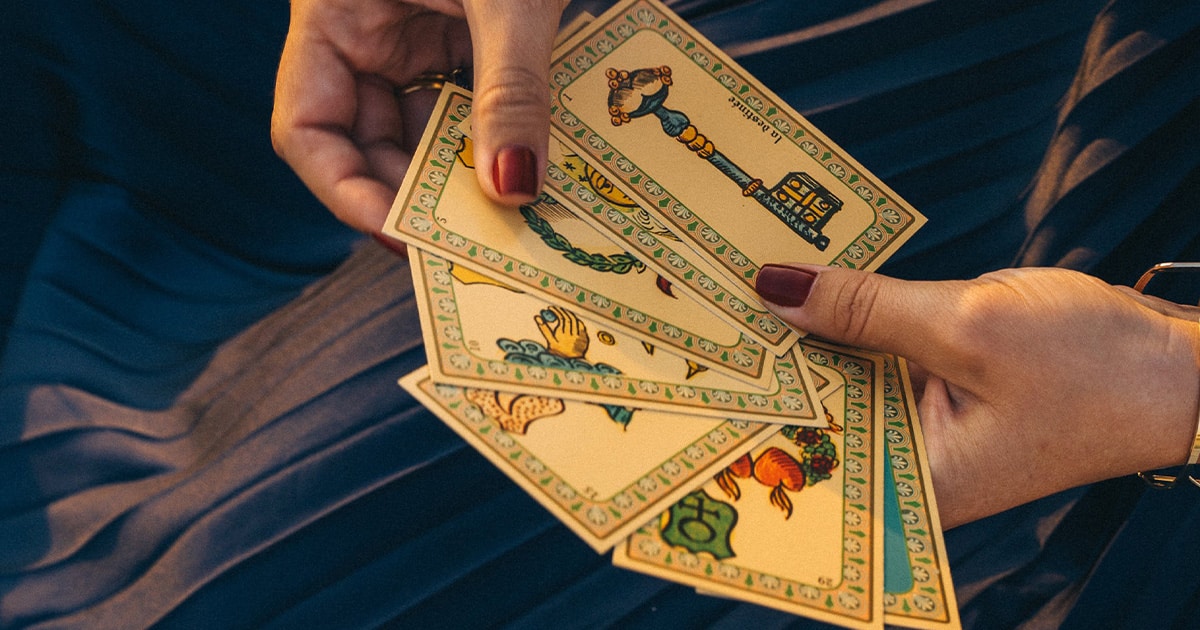The Hermit Tarot card, numbered nine in the Major Arcana, embodies a profound exploration of introspection, solitude, and the quest for enlightenment. As a card steeped in symbolism, it speaks to those who seek wisdom through withdrawal from the tumult of daily life. This article delves into the intricacies of The Hermit card, examining its multiple facets and the diverse interpretations it may inspire.
In its traditional depiction, The Hermit is illustrated as an elderly figure cloaked in a gray robe, holding a lantern that illuminates his path. This lantern, often interpreted as a symbol of guidance, signifies the inner light that one must discover amid the darkness of confusion and doubt. The grey robe may represent neutrality and detachment, while the mountain or hill he stands upon indicates the higher perspective gained through solitude. Together, these elements form a potent visual that resonates deeply with the card’s core meaning.
One of the primary themes associated with The Hermit is self-discovery. This card encourages individuals to turn inward, seeking answers not from the external world, but from their internal thoughts and feelings. It signifies a time for reflection, urging practitioners to take a step back and consider their personal journey and the lessons learned along the way. Such an introspective period can lead to significant personal growth and maturation, as one reevaluates beliefs and reconsiders priorities.
An often-overlooked aspect of The Hermit card is its association with mentorship and guidance. While its usual interpretation suggests seclusion, it also hints at the Hermit as a sage or wise teacher, capable of imparting wisdom to those who seek it. This duality suggests that solitude is not merely a lonely endeavor; instead, it can be a precursor to enlightenment and understanding, fostering the desire to share knowledge with others upon achieving clarity. In this view, the Hermit represents both the seeker and the guide, embodying the cyclical nature of wisdom.
In relationships, The Hermit may indicate a need for space and individuality. When drawn in a reading concerning emotional connections, it can signify that one or both partners require solitude to reflect on their needs, desires, and goals. This withdrawal is not necessarily indicative of disconnection; instead, it can be vital for maintaining a healthy relationship by ensuring that both parties feel fulfilled and autonomous. The card advocates for the importance of self-reliance and understanding in nurturing interpersonal bonds, serving as a reminder that personal growth can, in fact, strengthen relational ties.
Moreover, The Hermit card speaks to the notion of spiritual enlightenment. Many interpretations link this card to the search for deeper understanding, whether that be through meditation, study, or other reflective practices. It suggests a turning inward, a deliberate suspension of the external distractions that inhibit one’s capacity to connect with the spiritual realm. As such, it resonates strongly with those on a path of spiritual discovery, indicating that the answers they seek lie within, rather than in the external world.
As with any Tarot card, the context in which The Hermit appears is crucial to its interpretation. In a spread focused on a particular challenge or question, The Hermit may signify that now is the time to retreat into one’s own thoughts, gathering insight and fortitude before proceeding. Conversely, in a reading indicating joy and fulfillment, it might suggest that a period of solitude will ultimately lead to greater achievements and understanding.
When upright, The Hermit heralds positive connotations of introspection and wisdom. It encourages taking time for oneself, recognizing that such moments of solitude can lead to clarity and profound insights. The energies of this card promote patience and self-reflection, solidifying its role as a guide through uncertain times.
Reversed, however, The Hermit takes on an entirely different tone. When the card appears in this orientation, it may indicate isolation or a refusal to engage with the self. It can suggest that the individual is becoming too withdrawn, neglecting connections with others out of fear or uncertainty. This state of disconnection can impede personal growth and prevent one from receiving the support and love that others are willing to offer. Awareness of the potential negative implications of a reversed Hermit is essential, emphasizing the need for balance between solitude and social interaction.
In practical application, The Hermit encourages embracing periods of quiet and personal contemplation as essential components of life. It underscores the merit of stepping away from social obligations to foster a deeper understanding of oneself. The notion of “finding oneself” is paramount, and in today’s fast-paced world, heeding the lesson of The Hermit is more relevant than ever.
Ultimately, The Hermit Tarot card serves as a significant reminder of the importance of introspection, self-discovery, and the wisdom that can be found in stillness. It represents the path to enlightenment through reflection and will play a vital role in guiding seekers on their journeys. Whether one is facing personal dilemmas, relationship complexities, or spiritual uncertainties, The Hermit stands as a beacon of light, illuminating the path toward understanding and growth. The journey it offers is multifaceted—an exploration not only of self but of the intertwined relationships with others and the greater universe.









Leave a Comment